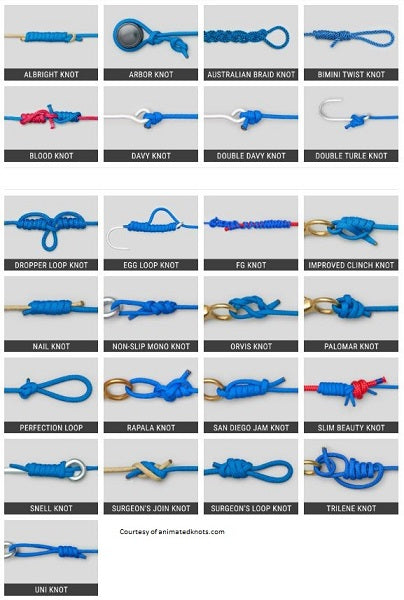You got the right gear, the right lure or bait, the right place and time and wearing your lucky new soakable floatable UV mesh hat. You get your line and bait out and hook up on that elusive prize fish you've been working on all morning. The fight is on! You wrestle that beauty for a while until it gets just about within your netting distance. Then, it sees the boat and does an about-face jerking your line and...zip!...it's gone.
You find at the end of your line a missing hook and a curly tag end...the signs of a failed knot.
Tying the right knots (and good knots) is undoubtedly the most important step to ensuring you'll get fish in the boat. Take time to learn the proper knots to use for the type of fishing you're doing. Some knots work better than others depending on the size and type of line you're using (i.e. monofilament vs braid) and the purpose of the knot (i.e. attaching a hook, connecting 2 lines, or tackle).
I found a great website that provides animated instructions on how to tie various popular knots used for fishing and other uses at home, work and play:
https://www.animatedknots.com/fishing-knots
Spend some time checking out the knots and compare to the ones you may be using and/or may already be familiar with. If you've been loosing fish to sloppy knot tying failures then it's time to take some Knot-Tying 101.
For the CA Suisun delta striper bass and sturgeon fishing I tend to favor the palomar, surgeon's and uni-knots depending on whether I'm fishing with bait or lures. I usually snell my hooks when bait fishing.

